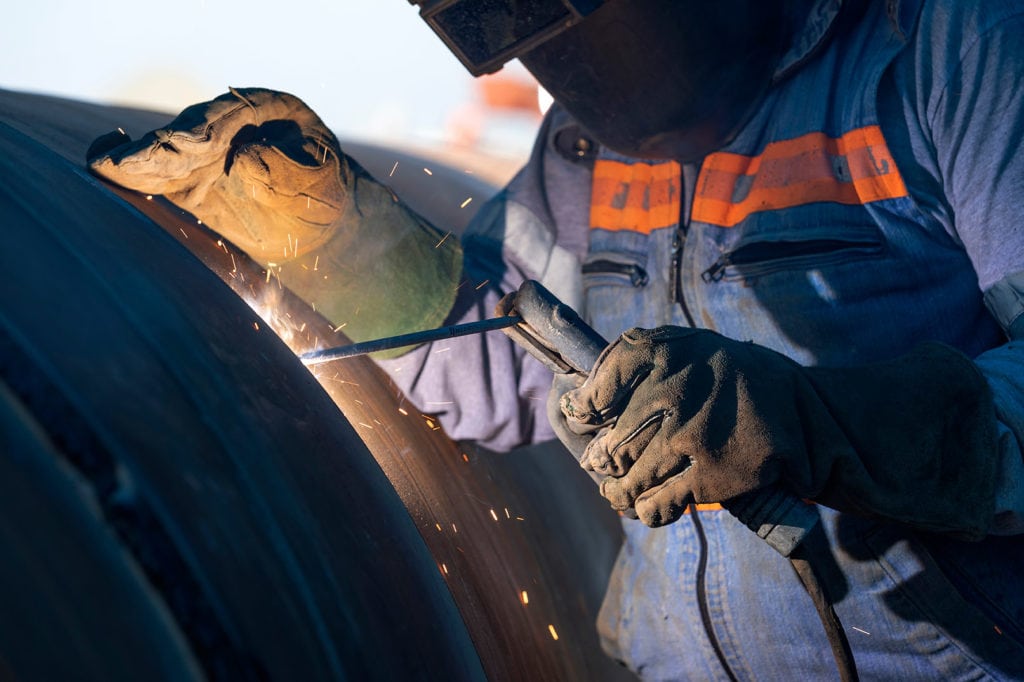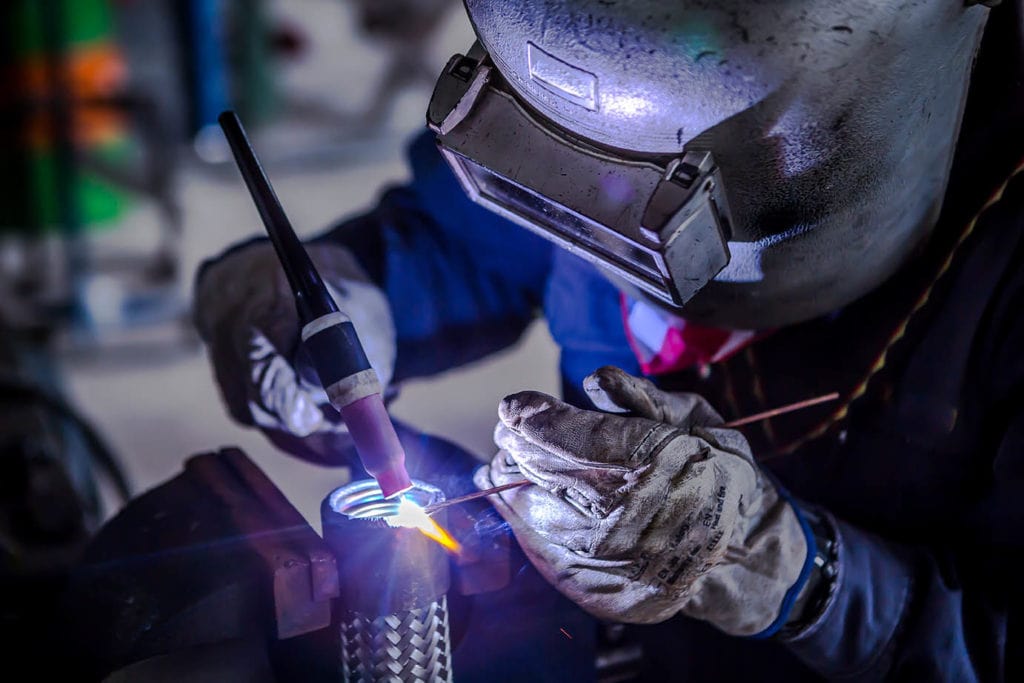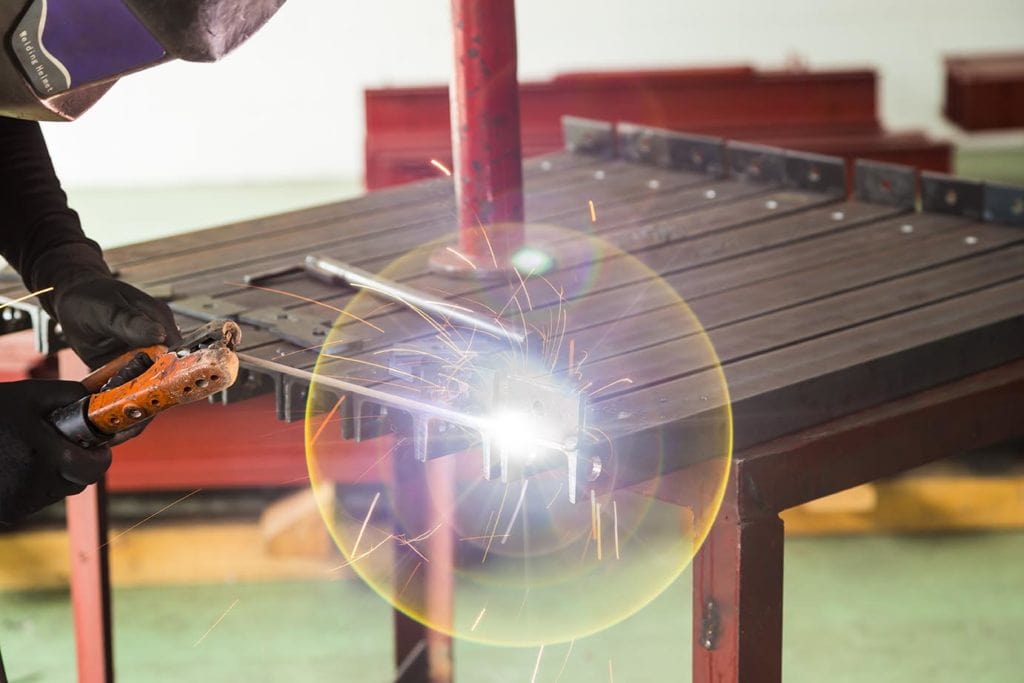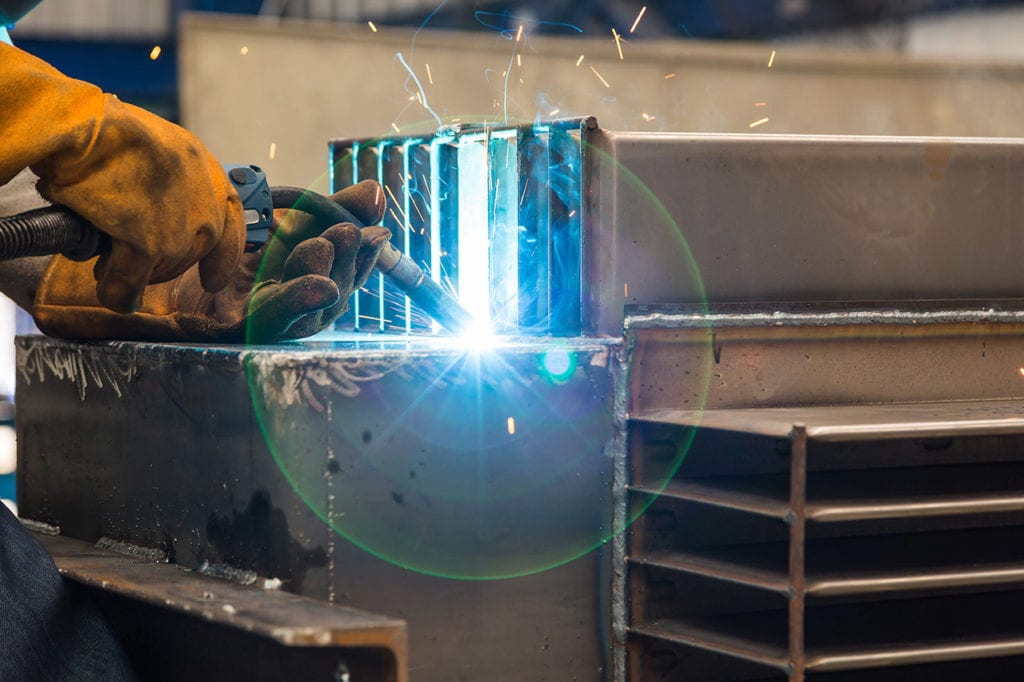What Does DCEP Mean in Welding?
Last Updated on

The welding process uses two power source forms: the alternating current (AC) or direct current (DC) power supply. In DC, the current moves in one direction only. It can be from the electrode to the base material and vice-versa. So, what does DCEP mean in welding?
Polarity is the flow of current through a circuit in a particular direction. Here, polarity describes the connection of the terminal from a power source to the electrode.
When using DC, and the electrode’s connection is on the positive terminal. This polarity is referred to as DCEP. DCEP is the direct current electrode positive. Current flows from the base metal towards the electrode.
However, if the electrode connects to the negative terminal, this connection is called direct current electrode negative or DCEN. Here, current flows from the electrode towards the base metal.
What is DCEN Used For?
DCEN is suitable for welding thick metal plates. It gives a higher penetration level because a larger portion of heat is applied on the base plates. Generally, thicker metal plates have a high melting point.
The welding process is sensitive. The electrical current you choose should be compatible with the type of welding you want to do. It is because each current affects the energy output and quality of the welds.
There are two basic types of welding suitable for DCEN currents. These are:
Tungsten Inert Gas (TIG)-Welding
TIG welding is the preferred and everyday application of DCEN current. When a tungsten electrode receives a negative charge, it doesn’t overheat. As a result, ⅔ of the heat generated is applied to the metal base.

Shielded Metal Arc Welding (SMAW) – Overlay or Root
SMAW is considered a versatile welding process than GMAW in polarity. It means that SMAW electrodes can use AC, DCEN, and DCEP currents in most welding applications.
Flux core electrodes are compatible with DCEN as they prevent the melting and overheating of the electrode. DCEN is the best for SMAW applications when used with a consumable electrode.

Is 7018 DCEN or DCEP?
A 7018 electrode is best used with a DCEP current. A 7018 has a low-hydrogen iron powder, making it easy to control, resulting in a smooth weld bead. There is a constant flow of current in the same direction.
Even though you can use a 7018 electrode on DCEN current, it is not ideal for penetration. A 7018 on DCEN is best applied on thin metal sheets.
Do You Weld 7018 AC Or DC?
The best feature of a 7018 is that it is an all-position electrode. It means that it is compatible with both AC and DC welding applications. The 7018 electrodes give out the best quality x-ray welds because of the low-hydrogen iron powder.
The electrodes are suitable for welding applications of medium-grade carbon steel because it doesn’t need preheating. However, on cold roll steels, 7018 exhibits excess porosity, especially when used with conventional electrodes.
- Offshore power plants and rigs
- High, medium, and low carbon steels
- Low-alloy structures
- Steel structures
What Polarity Is Used For 7018?
The 7018 electrodes are for all position welding. It means they are ideal for both AC and DC polarity applications. It is a low-hydrogen iron powder that makes it have appealing and robust weld beads. You can use 7018 electrodes for higher-strength steel welding processes.
What Amp Do I Need To Weld With 7018 Rods?
A 7018 welding rod has no specific amperage. The rod diameter determines the amperage you should apply. Also, you select the rod diameter based on the metal plate thickness you want to weld.
However, currents upwards of 225 amps are sufficient for use with the 7018 electrodes. Here, the rule of thumb is that for every 1/32 inch of electrode diameter, use 30 amps of current.
Why Is DCEP Current Used For GMAW?
The reasons are many. A DCEP on GMAW yields a strong arc, low splatter, appealing weld bead, deep penetration, and a smooth metal transfer.
In contrast, the DCEN on GMAW leads to large molten droplets and larger grain spatters. However, you can curb such results using specific wires that possess unique chemical compositions for DCEN welding applications.
DCEN on GMAW welding processes is suitable for galvanized metal sheets.

What Are The Advantages of using DCEP?
- Higher metal deposition rate
- Low distortion
- Suitable for aluminum and copper welds
- Low defects
- Cleaner arc
In DCEP welding applications, ⅔ of the heat is generated at the electrode while ⅓ is on the base metal plates. Therefore, the welding rod melts faster than the base plate leading to increased metal disposition speed.
As the electrons flow from metal base plates, it removes excess oil, dust-coating, and oxide layers. It is an oxide cleaning process that minimizes the occurrence of inclusion defects.
DCEP welding applications favor thin metal sheets as it has low melting point and penetration.
What Are The Disadvantages of Using DCEP?
- Short electrode life
- Low melting point
- Incomplete fusion
- Limited use (for thin plates only)
Incidences of incomplete infusion happen because only ⅓ of the heat is concentrated on the base metals plates. Expect low penetration levels and the need for extra reinforcements during the welding process.
Alternatively, it would be best if you considered using AC or DCEN currents.
FAQs
Why should I use shielded electrodes?
Shield metal arc welding uses a protected and consumable electrode to prevent oxygen and other gases from entering the weld area.
What is the best welding machine for general welding applications?
Consider a welder with both DC and AC applications. It doesn’t matter if it is a gas engine or electric arc welder. However, there are other important aspects to keep in mind.
DC welding has many advantages over AC welding. It has few outages, easy starts, appealing welds, less spatter, smooth arc—best for overhead and vertical welding applications.
DCEP has better penetration at specific amperage than AC welding applications. DCEN is suitable for thin metal sheet welds.
What are the advantages of using AC output?
AC welding is perfect for welding metal base materials that have been magnetized by friction. For instance, DC does not work on steel metal sheets that repeatedly rub on water or hay. The magnetic field arc may blow the molten metal out of the weld area.
AC is suitable for magnetized metals because the current alternates between the polarities. This enables the welding of magnetized parts.
Conclusion
We hope that you have enjoyed learning what DCEP means in welding. The type of welding process you apply and the materials will determine the outcome of the welding. The electrical current affects the results because different heat levels are generated. Heat level determines the weld appeal.
You must understand the advantages you can get from DCEP and DCEN welding processes. Polarity plays a significant role in achieving the weld outcome you want.
You might also like:
- What Causes Pinholes in Welding? Causes & Solutions
- How to Get into Pipeline Welding: A Step-by-Step Guide
- How to Join a Welding Union: Pros, Cons & Guide
Featured Image Credit: Funtay, Shutterstock
